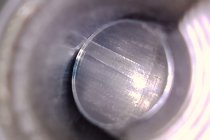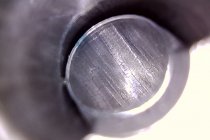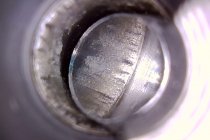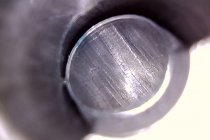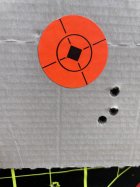I've been thinking about doing a post like this for a while that will serve as a good illustration of the erosive process in the larger case capacity to bore diameter ratio cartridges, aka 'barrel burners.' I have three .22 Creedmoor barrels that are at different stages of life that demonstrate this progression quite clearly. They also clearly show that some of the comments that are offered as fact regarding barrel burners, are not accurate at all. I want to keep this as short as possible so it doesn't turn into a dictionary length post so I'll post some info regarding the barrels.
1. All 3 barrels are Krieger .218 bore 8 twist 4 groove. I chambered all of them with the same JGS reamer with .110 freebore.
2. These barrels are on my predator rifles and have not been overheated in colony varmint fields.
3. Powder has been predominately VV N-160 with some Rl-26 also.
4. Barrel #1 is a chambered blank that I have waiting in the wings to replace barrel #3 when it officially dies. Round count is 0.
5. Barrel #2 has 598 rounds.
6. Barrel #3 has 1217 rounds.
Borescope image of barrel #1
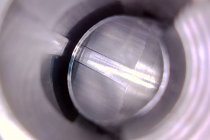
1. All 3 barrels are Krieger .218 bore 8 twist 4 groove. I chambered all of them with the same JGS reamer with .110 freebore.
2. These barrels are on my predator rifles and have not been overheated in colony varmint fields.
3. Powder has been predominately VV N-160 with some Rl-26 also.
4. Barrel #1 is a chambered blank that I have waiting in the wings to replace barrel #3 when it officially dies. Round count is 0.
5. Barrel #2 has 598 rounds.
6. Barrel #3 has 1217 rounds.
Borescope image of barrel #1

Last edited:










